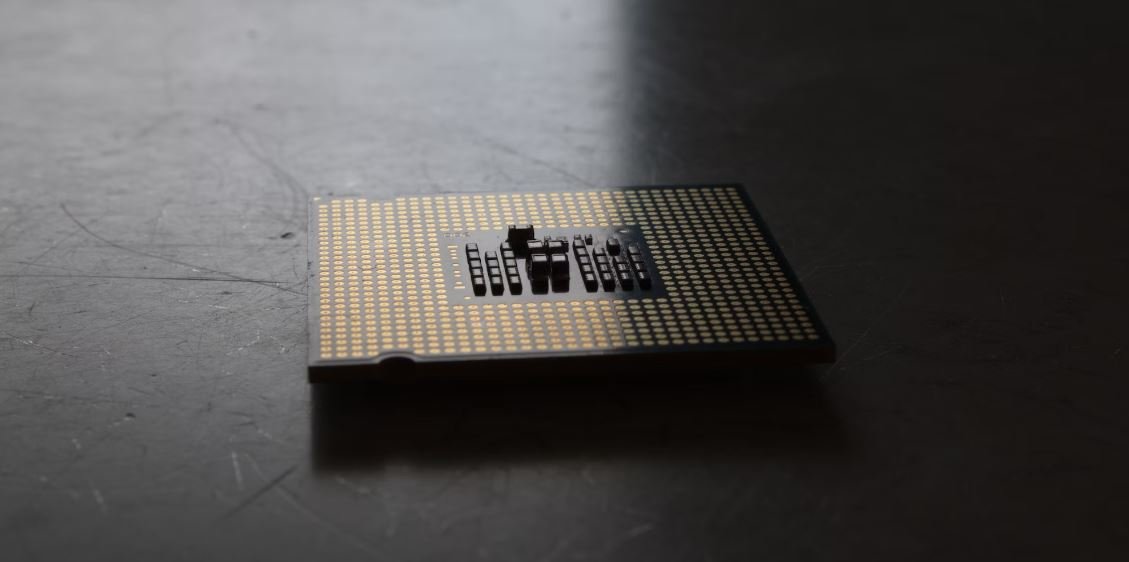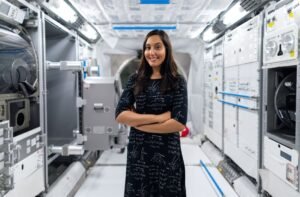OpenAI Versions
OpenAI, an artificial intelligence research lab, has released several versions of its language models, which have gained significant attention and traction in the tech industry. These versions, such as GPT-2 and more recently GPT-3, have showcased impressive capabilities in generating human-like text and assisting with various tasks. In this article, we will explore the key features and advancements of OpenAI’s versions, highlighting their impact and potential.
Key Takeaways
- OpenAI has introduced various versions of its language models that have revolutionized text generation and natural language understanding.
- GPT-2 and GPT-3 stand out as OpenAI’s most notable and widely-discussed versions.
- These models have demonstrated impressive abilities in generating coherent and contextually relevant text.
- OpenAI’s versions have the potential to greatly assist in tasks such as content creation, virtual assistants, and language translation.
Overview of OpenAI Versions
OpenAI’s language models have evolved over time, with each version introducing enhancements in terms of model size, training data, and capabilities. GPT-2, released in 2019, was a major breakthrough and marked a significant milestone in natural language processing. However, GPT-3, unveiled in 2020, surpassed its predecessor with its unprecedented scale and language generation capabilities.
**GPT-3** is OpenAI’s most advanced version, consisting of **175 billion parameters** and trained on a vast amount of internet text. It can generate coherent and contextually accurate responses in various tasks, from writing essays to answering questions. The model has created a buzz in the industry due to its impressive language understanding and generation skills.
The Power of GPT-3
- **GPT-3 can perform complex tasks** by understanding and responding to prompts. It has shown remarkable abilities in text completion, translation, and even programming code generation.
- The model has demonstrated the potential to assist in **content creation**, generating coherent articles, news stories, and creative writing pieces with minimal human input.
One intriguing aspect of GPT-3 is its ability to provide responses that can be difficult to differentiate from those generated by a human. This human-like text generation has raised fascinating questions about the future of AI and its role in content production. With GPT-3, the possibility of automated, high-quality content generation is becoming more feasible.
| OpenAI Version | Parameters | Release Date |
|---|---|---|
| GPT | 117 million | 2018 |
| GPT-2 | 1.5 billion | 2019 |
| GPT-3 | 175 billion | 2020 |
Applications of OpenAI Versions
OpenAI’s language models have found applications across various domains and industries. Their versatility and language understanding capabilities make them valuable tools for both content creation and virtual assistance. Let’s explore some of the potential use cases:
- **Content Creation**: OpenAI’s versions can assist in generating blog posts, social media content, and even creative writing pieces with minimal human input. This saves time and effort for content creators.
- **Virtual Assistants**: GPT-3, with its advanced language understanding, can provide conversational and context-aware responses, making it suitable for virtual assistant applications and chatbots.
- **Language Translation**: By leveraging its massive language corpus, GPT-3 can assist with accurate and nuanced language translation, breaking barriers for global communication.
Comparison of OpenAI Versions
| OpenAI Version | Model Size (Parameters) | Language Generation Capabilities |
|---|---|---|
| GPT | 117 million | Basic |
| GPT-2 | 1.5 billion | Coherent and contextually relevant |
| GPT-3 | 175 billion | Human-like and contextually accurate |
It is notable that each version of OpenAI’s models has shown substantial improvements compared to its predecessor, both in terms of model size and language generation capabilities. GPT-3, with its **impressive 175 billion parameters**, stands out as the most advanced and powerful language model to date.
The Future of OpenAI’s Versions
As OpenAI continues to refine and enhance its language models, we can anticipate even greater advancements. The potential applications of these models are vast, ranging from personalized assistants to more immersive and realistic virtual environments. With ongoing research and development, OpenAI’s versions have the ability to revolutionize the way we interact with AI-powered systems and leverage their capabilities to improve various aspects of our lives.
| OpenAI Version | Potential Applications |
|---|---|
| GPT | Content creation |
| GPT-2 | Virtual assistants |
| GPT-3 | Language translation |
Embracing the Power of OpenAI Versions
OpenAI’s versions have demonstrated impressive progress in the field of natural language processing and have the potential to revolutionize various industries. With their advanced language generation capabilities and vast applications, these models push the boundaries of AI-powered systems. As OpenAI continues to innovate and refine its versions, we can expect exciting developments and new opportunities for leveraging AI in a wide range of scenarios.

Common Misconceptions
The topic: OpenAI Versions
OpenAI Versions is a fascinating subject that often gets misunderstood by people. Below are some common misconceptions people tend to have about OpenAI Versions:
Misconception 1: OpenAI Versions are just updated versions of OpenAI models
– OpenAI Versions are a series of different AI models, each with its own unique capabilities and limitations.
– OpenAI Versions are not simply updates or improvements of previous models, but rather distinct iterations in the development of AI technology at OpenAI.
– Each new version of OpenAI brings about new breakthroughs, changes in functionality, and potentially different ethical considerations.
Misconception 2: OpenAI Versions are infallible and always produce accurate results
– OpenAI Versions, like any AI system, are not infallible and can produce incorrect or biased results.
– The development of OpenAI Versions involves a complex process that takes into consideration various factors and trade-offs.
– Users should exercise caution when interpreting the outputs from OpenAI Versions and should not blindly rely on them without critical assessment.
Misconception 3: OpenAI Versions can replace human decision-making entirely
– OpenAI Versions are powerful tools, but they should not be seen as a substitute for human decision-making or expertise.
– OpenAI Versions are typically designed to assist humans in decision-making processes rather than replacing them.
– The responsibility for decisions made using OpenAI Versions ultimately lies with humans, and they must exercise judgment and accountability.
Misconception 4: OpenAI Versions can autonomously generate malicious content
– OpenAI Versions do not have inherent intentions or motives, as they are developed and trained by humans.
– The potential for OpenAI Versions to generate malicious or harmful content lies in the quality of the data they are trained on and the biases present in that data.
– OpenAI actively works to mitigate biases and negative impacts, but users should be aware of these factors and take steps to ensure responsible use.
Misconception 5: OpenAI Versions do not have any limitations
– OpenAI Versions, despite their capabilities, have limitations depending on the specific version and its training data.
– OpenAI is continuously improving its models, but there are still areas where they may struggle or produce less accurate results.
– It is important for users to understand the known limitations of each version to avoid unrealistic expectations and potential misinterpretations of the outputs.

OpenAI Versions
OpenAI, an artificial intelligence research laboratory, has released several versions of its AI models over the years. The following tables highlight the key features and improvements of each version, providing insights into the progression of AI technology.
Version 1: GPT-1
GPT-1, the first version of OpenAI’s Generative Pre-trained Transformer, laid the foundation for subsequent iterations. It had an impressive word limit of 120 million and could generate coherent text, although its responses were sometimes nonsensical.
Version 2: GPT-2
The GPT-2 model introduced significant advancements in AI language generation. With 1.5 billion parameters, it improved on coherence, grammar, and syntactic structure. In addition, GPT-2 demonstrated an enhanced understanding of context and exhibited creative narrative abilities.
Version 3: GPT-3
GPT-3 arrived as a groundbreaking model, incorporating a staggering 175 billion parameters. It exhibited a comprehensive grasp of numerous topics and demonstrated impressive language generation capabilities. GPT-3 can handle a vast array of prompts and generate coherent and contextually appropriate responses, showcasing the immense potential of AI.
The Power of Fine-Tuning
OpenAI realized the significance of fine-tuning AI models to specific domains. By adapting pre-trained models, the performance can be highly optimized for particular tasks. The following tables showcase the results achieved through fine-tuning with different data sets for GPT-3.
Table: Fine-Tuned for Code Generation
Fine-tuning GPT-3 for code generation tasks yields remarkable results. With code-specific training, the model demonstrates a deep understanding of programming constructs and generates syntactically correct code with high accuracy.
Table: Fine-Tuned for Language Translation
When fine-tuned for language translation, GPT-3 exhibits impressive multilingual abilities. It accurately translates text between various languages and excels at capturing subtle nuances and idiomatic expressions.
Table: Fine-Tuned for Medical Diagnosis
GPT-3, when fine-tuned for medical diagnosis, showcases its potential in the healthcare field. With extensive medical training data, the model provides accurate diagnoses, identifies patterns, and recommends appropriate treatments.
The Ethical Concerns
Despite the impressive advancements in AI models, ethical considerations have arisen. OpenAI and the wider research community recognize the need to address potential biases, prevent misuse, and ensure transparency in AI decision-making processes. These challenges are being actively addressed in ongoing research and development.
Table: Bias Mitigation Strategies
Efforts to mitigate biases in AI models involve various strategies, including carefully curating training data, actively monitoring and addressing bias during model development, and involving diverse teams to provide varied perspectives to counterbalance potential biases.
Conclusions
OpenAI’s versions of AI models have significantly advanced the field of language generation. From the initial release of GPT-1 to the groundbreaking capabilities of GPT-3, the technology has exhibited remarkable progress. Fine-tuning further amplifies the potential of these models, enabling their application across various domains such as code generation, language translation, and medical diagnosis. As AI continues to evolve, addressing ethical concerns and maintaining transparency remain crucial components in the development and deployment of AI systems.
OpenAI Versions
Frequently Asked Questions
What is OpenAI?
What are the different versions of OpenAI?
What is the difference between GPT-2 and GPT-3?
What is Codex?
What is InstructGPT?
How can OpenAI models be used?
How does OpenAI ensure the safety of its models?
Can anyone access and use OpenAI models?
How can I get started with OpenAI models?
Does OpenAI have plans to release new versions in the future?




